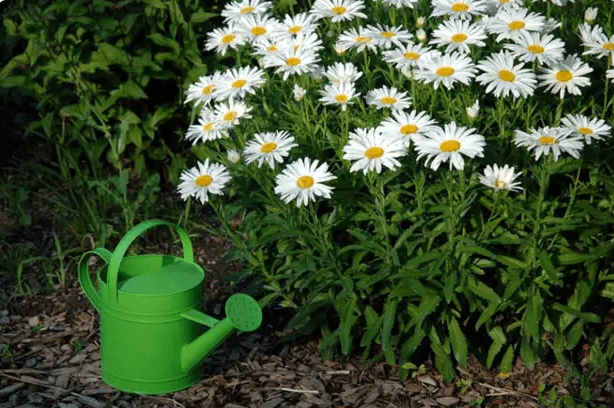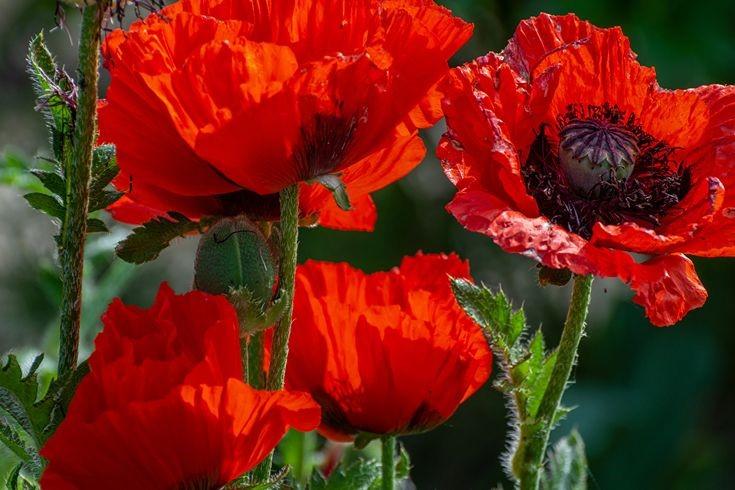Content
Pyrethrum parthenium grows independently in the wild in the Caucasus, Balkans, Transcaucasia and Asia Minor. Many people often confuse this plant with daisies, since they are quite similar, but the crops have completely different characteristics. There are about 40 varieties of pyrethrum, but only a few are grown in suburban and summer cottages.
Description of feverfew
Pyrethrum is a plant of a separate genus from the Asteraceae family that grows in North America, Asia and Europe. Translated from Greek, “pyretos” means “fever”, “heat”. This name was given to the plant due to its medicinal properties.

Bushes of different types of feverfew grow from 5 cm to 1.5 m in height
They have pinnately dissected green leaves. Flowers are collected in baskets-inflorescences. Their size is 1.5-3 cm. The massive center of the flower is yellow, the petals of most species are white, with a yellowish tint, but there are also pink and red ones.

After sowing the seeds, tansy begins to bloom after 80-100 days
Flowering period – July-August. Seed material: cream seeds. They are stick-shaped and retain their germination properties for up to three years.
Varieties of feverfew
A fairly large variety of types of pyrethrum delight the eye with their colors and decorative shape of the buds. The plant is often used to decorate garden beds.
Pyrethrum maidens Snow globe
Pyrethrum maidens Snowball is an annual plant grown from seeds. Compact bushes grow up to 30 cm; a large number of white terry inflorescences are formed on them, which resemble small pads with a diameter of no more than 2.5 cm.
This subspecies of flower is excellent for group designs of flower beds, borders, borders and pots. The plant is undemanding to the soil, loves the sun, and is resistant to minor frosts.
The photo below shows pyrethrum maiden snow globe

Seeds are used for planting in greenhouses and open ground
Pyrethrum maiden Golden ball
Pyrethrum maiden Golden ball, which is grown from seeds, is distinguished by double spherical flowers that have a yellow-golden color. The flower bush is small in size - up to 25 cm.

Terry yellow inflorescences stand out brightly against the background of green foliage
Pyrethrum maidens Scarlet star
The Scarlet Star variety is a perennial plant that grows up to 80 cm in height.Distinguishing Characteristics: Bright red petals around a bright yellow center. The flowering period is the first months of summer.

The Scarlet Star variety will add color to the summer flower bed
Pyrethrum virgin Santana
The Santana variety is grown as an annual. The height of the bushes is 10-15 cm, the baskets of inflorescences are round in shape, with a diameter of 4 cm. The plant is resistant to adverse weather conditions, incl. low temperatures. Suitable for planting in home flower pots and containers. It is used to decorate low-growing flower beds.

Flowering period of the Santana variety is July-September
Tansy maiden Vegmo Snowball
Tansy Vegmo Snowball is a garden cultivated form, grown from seeds. Flowering is observed almost throughout the summer, until late autumn.

Terry fluffy inflorescences of Vegmo Snowball resemble snow balls
Pyrethrum maidens Snow stars
The variety Snow stars is an annual ornamental plant, unpretentious in care, grows in height up to 80 cm. The diameter of the flowers reaches 3 cm. Blooms profusely starting in June.

Flowering of Snow Stars continues until the onset of frost.
Pyrethrum maiden of this subspecies is characterized by increased resistance to adverse weather conditions.
The benefits and harms of feverfew
Decorative tansy is grown not only for decorating flower beds and decorating living spaces with house flowers. The plant is effectively used for medicinal purposes for various pathologies:
- hypertension;
- headache;
- worms;
- female genital diseases.

Medicines based on feverfew are good for migraines.
Tinctures and decoctions are useful as cosmetic compositions.They soothe the skin, prevent inflammation, and ensure regeneration. The extract obtained from flowers and leaves is used to produce poisons against bedbugs. At the same time, the plant does not pose a danger to humans.
Planting feverfew
Planting young sprouts of feverfew, grown from seeds, in the ground and caring for an established plant does not present any difficulties. Seedlings are planted after the cold weather has completely ended, when the night temperature no longer drops below +5ºС.
Rules for planting feverfew:
- Choose a place that is not too sunny.
- Dig holes for seedlings in increments of 25-30 cm.
- The sprouts are transplanted from a flower pot or seedling container along with soil so as not to break the young roots.
- After planting the plant, the soil is slightly moistened.
Pyrethrum maiden prefers nutritious, loose soil in which rainwater does not stagnate. The plant does not like heavy clay soils.
Care for feverfew
After planting in the ground, tansy Vegmo Snezhok and other varieties do not require any special care. It is enough to follow standard procedures:
- periodically moisten the soil;
- mulch, loosen the soil;
- weed and remove weeds;
- add fertilizer to the soil;
- prune the plant;
- prevent diseases and attacks by insect pests.
Mulching the soil helps prevent the formation of a dense crust.
Watering

In order for pyrethrum to remain decorative, it must be watered in a timely manner.
During drought, the green foliage turns brown and loses its original shape, and the inflorescences quickly fade. But it is also not recommended to oversaturate the soil with moisture. This can cause root rot to develop.
Feeding
When growing flowers for cutting, universal fertilizers for flowering crops are applied to the soil. To prevent burning of the roots, the fertilizing process is combined with watering.
Trimming
For pyrethrum, sanitary pruning is used - broken or dried shoots and inflorescences that have bloomed and withered are removed. The stems are pruned only before wintering.
Diseases and pests
The plant crop is characterized by increased resistance to infectious diseases.
Most often, feverfew affects aphids, slugs and thrips. To combat aphids, special preparations “Aktellik” and “Aktara” are used. Slugs are removed manually, and thrips along with infected areas. The remaining healthy vegetation is treated with insecticides.
Reproduction methods
Different varieties of feverfew are propagated in summer cottages and garden beds by cuttings, dividing the bush and seeds. All methods of culture propagation are described below.
Dividing the bush
Dividing the bush is resorted to when it is necessary to rejuvenate perennial varieties, when they lose decorative qualities, or to transfer the plant to another plot of land.
The bush is dug up entirely and divided into separate parts.

The roots are treated with a fungicide
If the crop blooms, the root system is dug up along with the soil so that the pyrethrum can quickly adapt to its new location.
Cuttings
This propagation option is used for slowly developing and rare crop varieties. Cuttings are carried out in the spring. Prepared shoots are planted on a plot of land protected from direct sunlight.
The rooting period of cuttings is 2-3 weeks. If necessary, water the plants. When the cuttings take root, they are planted in open nutrient soil or flower pots.
Sowing seeds

To obtain a large number of seedlings, the crop is propagated by seeds.
The seed material is pre-disinfected and thoroughly dried. Pyrethrum is grown by seeds in March. The first inflorescences bloom the next year.
Use in landscape design

Perennial varieties of feverfew decorate homestead flower beds, city flower beds and borders.
The plant is used for edging carpet plant compositions or placed in the center.
The culture is used to create flower arrangements together with plants such as:
- Red poppy;
- bell;
- cornflower;
- cosmos;
- doronicum;
- basil.
To avoid periodic pruning when decorating decorative flower beds, dwarf varieties are used.

Maiden tansy takes root well and looks attractive under trees and close to bushes
Conclusion
Pyrethrum maidens is an ornamental plant whose natural habitat is the Caucasus and Transcaucasia, Asia Minor, and the Balkans. This plant is grown artificially in many regions, incl. at home in flower pots.The culture is characterized by both decorative and medicinal properties, and therefore is very popular.
Reviews of feverfew














